In the heart of Shanxi province, amidst ongoing urban development, an extraordinary discovery has captivated historians and archaeologists alike. The unearthing of a remarkably well-preserved tomb from the Ming Dynasty (1368–1644) near the village of Hexitou in Xinzhou offers a rare glimpse into the lives and burial customs of an elite figure from this influential period. Conducted by the Shanxi Provincial Institute of Archaeology and the Xinzhou Municipal Institute of Cultural Relics, the find has drawn attention not only for its impressive craftsmanship but also for the wealth of artifacts contained within.
Discovery and Location
The tomb, located in Xinfu District, was uncovered during a realignment project for National Highway 108. As construction workers excavated near Hexitou village, they stumbled upon a structure that would turn out to be an invaluable piece of history. Measuring an impressive 83 feet in length, the tomb boasts a sloping passageway that leads to a central burial chamber and a smaller back chamber. Its entrance, sealed with a stone gatehouse and double doors, underscores the importance of the individual buried within.
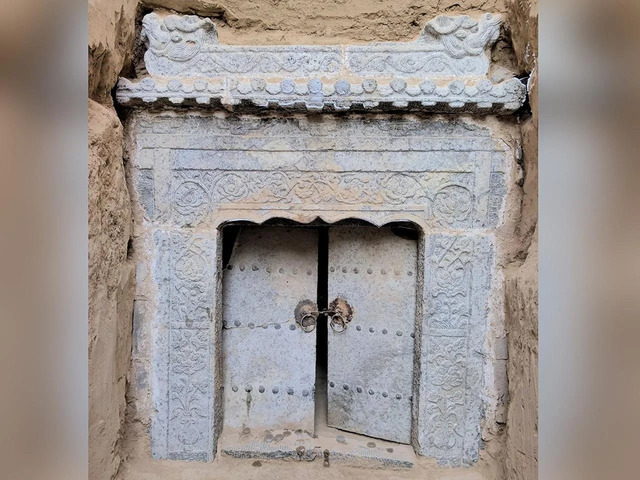
City officials and archaeologists have hailed the discovery as one of the most significant in the region. The elaborate architecture of the tomb suggests it was built for a prominent figure during the Ming Dynasty, offering protection and an eternal resting place for its occupant.
A Detailed Look Inside the Tomb
Upon entering the main chamber, archaeologists were met with two wooden coffins adorned with intricate designs, including gold-painted diamonds, leaves, and floral motifs. These designs reflect the exceptional craftsmanship of the Ming Dynasty and the occupant’s high social status. The coffins were surrounded by an array of funerary offerings, including pottery jars filled with grains, oils, and other liquids—symbolic items meant to sustain the deceased in the afterlife.
The back chamber revealed an equally impressive collection of wooden furniture, including altars, tables, and chairs, many of which remain in remarkable condition. These items not only provide insight into the artistry of the period but also suggest the importance of ritual and respect in Ming Dynasty burial practices. Additionally, the inclusion of everyday objects within the tomb highlights the belief in equipping the deceased with tools and comforts for their journey beyond life.
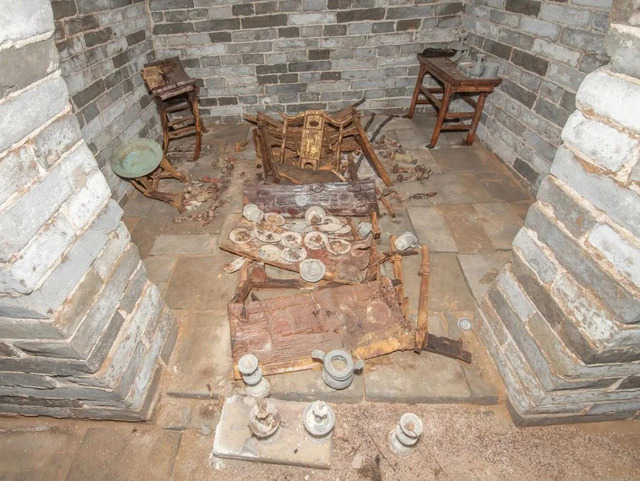
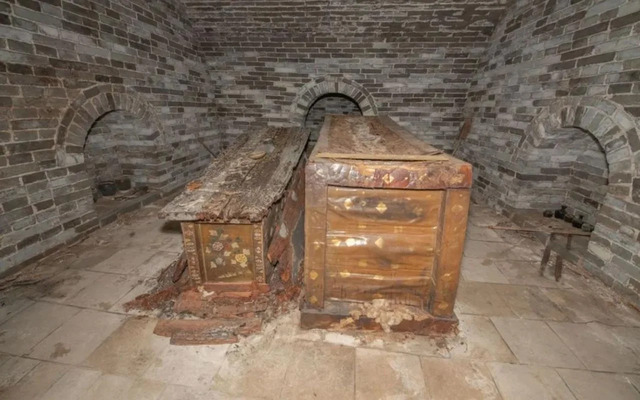
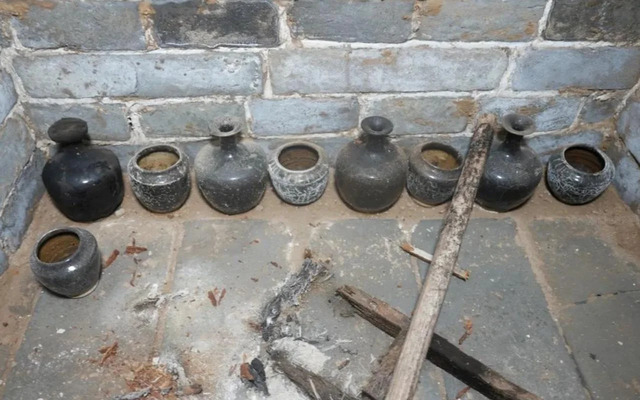
Cultural Insights from the Artifacts
The tomb’s contents offer a wealth of information about Ming Dynasty life, particularly among the elite class. Writing tools such as inkstones, Chinese calligraphy brushes, and pen holders were discovered within the tomb, underscoring the importance of education and literary culture during this time. These items reflect the intellectual pursuits of the Ming elite, who valued not only material wealth but also knowledge and refinement.
Inscriptions on the coffins and a land purchase contract found within the tomb identified the occupant as Wang Luo, a prominent figure in Xinzhou who lived from 1533 to 1588. This discovery adds a personal dimension to the excavation, linking the artifacts to an individual who played a significant role in the region’s history.
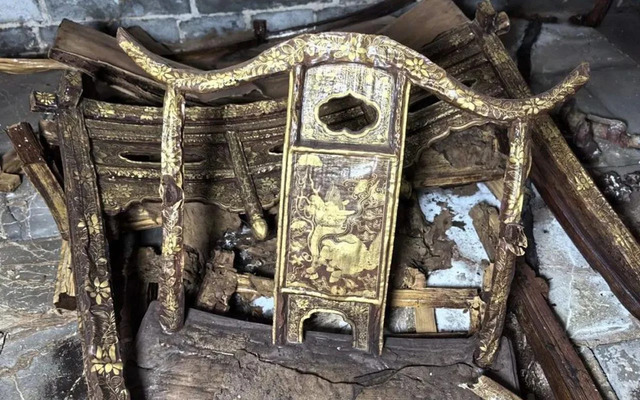

Preservation and Historical Significance
One of the most remarkable aspects of this find is the exceptional preservation of the wooden artifacts, a rarity in Shanxi due to its climate. The meticulous construction of the tomb, combined with its sealed chambers, has helped protect these items from decay over the centuries. This level of preservation allows researchers to study the artifacts in their near-original state, providing invaluable insights into Ming Dynasty craftsmanship and burial practices.
The tomb’s discovery is part of a broader trend of archaeological exploration in the Xinfu District, where sites spanning various historical periods have been unearthed. From the Longshan culture to the Warring States period, the region boasts a rich tapestry of history. However, this tomb stands out for its combination of architectural sophistication, the abundance of funerary objects, and the detailed inscriptions that reveal personal stories.
Broader Implications of the Discovery
The Ming Dynasty tomb in Xinzhou sheds light on the burial customs, social hierarchy, and artistic achievements of the time. The elaborate construction of the tomb and the wealth of artifacts within it reflect the status and importance of its occupant, providing a vivid picture of elite life in 16th-century China. Furthermore, the discovery underscores the significance of ritual and respect in Ming burial practices, which sought to honor the deceased while ensuring their comfort in the afterlife.
The inclusion of functional and symbolic items, such as writing tools and furniture, suggests a belief in the continuation of life beyond death. These practices offer parallels to other ancient cultures while highlighting the unique cultural identity of the Ming Dynasty.
Conclusion
The discovery of Wang Luo’s tomb near Hexitou village is a monumental addition to the archaeological record of Shanxi province. Its meticulous construction, abundance of artifacts, and excellent preservation provide a rare opportunity to delve into the lives and beliefs of the Ming Dynasty elite. As archaeologists continue to study this remarkable find, it promises to deepen our understanding of a pivotal era in Chinese history and contribute to the broader narrative of human civilization.
This extraordinary tomb is not just a relic of the past; it is a bridge connecting us to the lives, traditions, and artistry of those who came before us. It serves as a powerful reminder of the enduring legacy of the Ming Dynasty and the timeless fascination of uncovering history buried beneath our feet.
